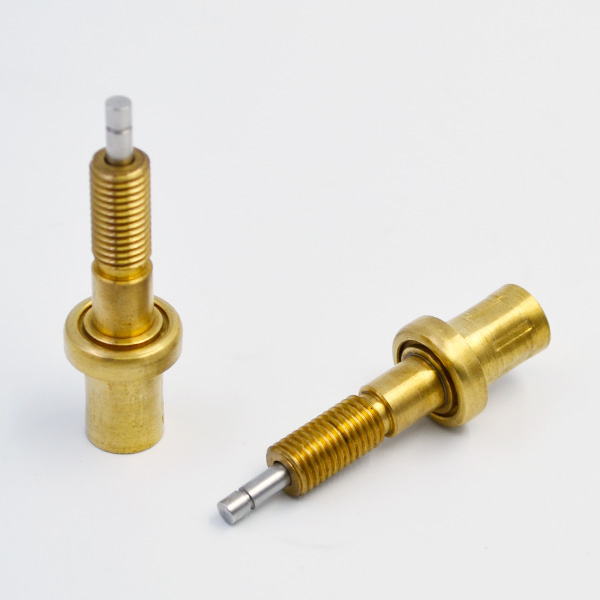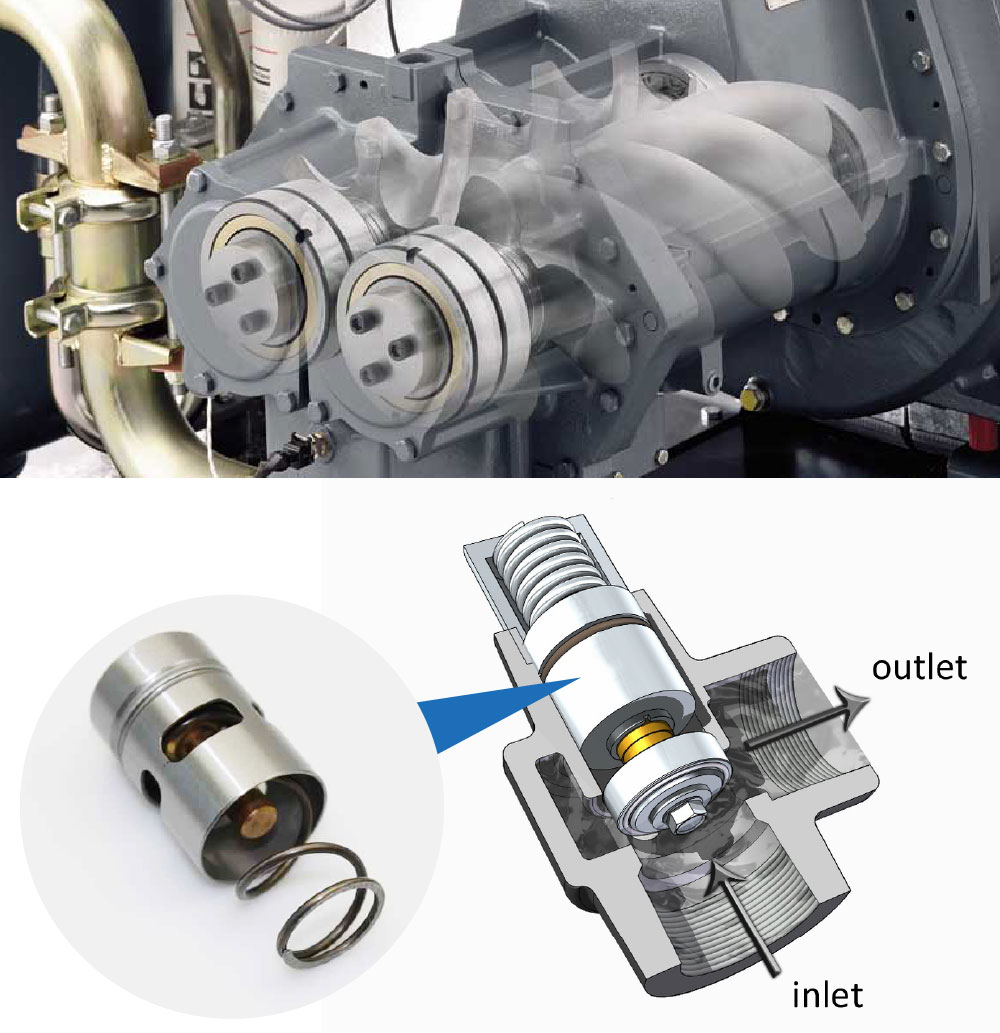Design and develop AMT clutch controller (CCU) for commercial vehicle. The hardware circuit of AMT clutch controller is designed and developed, mainly including power supply circuit design, CAN bus isolation design, brushless motor drive circuit design, brushless motor Hall sensor design and PCB circuit board design. The CAN of bottom drive, clutch control strategy and communication with TCU are designed and developed by using Codeworried compiler environment and C language. Bus communication protocol. The clutch controller (CCU) has the characteristics of self-switching down, low power consumption, strong anti-interference ability, self-diagnosis and short-circuit protection. The clutch control strategy, software communication protocol, clutch separation, combination time and control flexibility are tested by the clutch separation bench. The controller meets the needs of commercial vehicles. AMT system for commercial vehicles has been developing rapidly in recent years.
Automated transmission has been widely used in foreign city buses. In the bus market of Western Europe, North America, Australia and other places, AMT matching rate is very high. EATON, ZF and other mature AMT products with high market awareness are available.
At present, domestic AMT market share is very small, and the market is mainly occupied by international transmission companies such as Italian Marelli Group, thermostatic element American Eaton Company, German Zeifu Group and so on.

In addition, almost all the core technologies of automatic transmission are in the hands of foreign parts suppliers and various development companies, so it is of great significance to develop AMT system of commercial vehicles with independent brands in China. With the gradual development of domestic automobile market demand, urban bus will become the first AMT market. At present, about 55,000 buses will be equipped with AMT system every year. It is estimated that more than 30% of them will be equipped with AMT system. AMT will bring a series of benefits to public transport, such as reducing driver’s labor intensity and improving driving safety, passenger comfort is better than MT, and running fuel consumption is better than MT. As a result, more and more bus companies will choose AMT system, more and more vehicle factories will choose to produce AMT vehicles.
In the future, commercial vehicle AMT system will lead the rapid development of the whole commercial vehicle market. Electrically controlled electric AMT system has the following advantages: electrically controlled shift and clutch, high control accuracy, short power interruption time and good comfort; 24V motor execution, energy sufficient and clean; high-precision position sensor, to ensure control accuracy, sensor reliability; mature mechanical design, to ensure efficient operation of the mechanism, easy maintenance and maintenance.

The control method based on model and expert system ensures accurate gear selection, obvious throttling and fuel saving effect, and strong vehicle function to meet the control and operation requirements of different commercial vehicles. The hardware of the brushless motor controller is composed of MCU module, power supply circuit module, CAN bus module, three-phase H bridge driver module and Hall commutation sensor module. The structure block diagram of the brushless motor controller is shown in Figure 1. MCU uses 9S12XEP100 of NXP to control A3930 brushless motor driver chip to generate six PWM signals to drive six MOSFETs to control brushless motor action. Hall signals generated by AS5134 are fed back to the commutation signal of A3930.

TCU communicates data through CAN bus and brushless motor controller. The main contents of communication are rotation direction and clutch. Device displacement, motor speed, brushless motor current, brushless motor diagnostic information.

The power supply circuit of the controller is designed with Onsemi Bust chip LM2576, and the driving current reaches 2A. Brushless motor controller is powered down by ignition key. Infineon’s PMOS SPD09P06PL is used to control the main power circuit of the brushless motor controller. The overcurrent capability of the main circuit is 8A. The specific power supply circuit is shown in Figure 2. BATTERY is connected with 24 positive battery, GND is connected with negative battery, KeyOn is connected with ignition key, TurnOff_Delay is connected with MCU output IO port for power delay control. When the ignition key is powered on, the ignition key high-level drive Q11 triode is turned on, PMOS Q10 gate and source voltage Vgsth<-2v, Q10 conducts power supply circuit through electricity, LM2576 outputs 7V voltage, LM7805 outputs 5V to MCU power supply, MCU controls TurnOff_Delay output high level to keep power on; when the ignition key is powered on, the power supply circuit is maintained continuously. The ignition key is low level, TurnOff_Delay is high level, and the power-on circuit is continuously on. When the EEPROM output in the power-off storage area is saved, MCU controls TurnOff_Delay to output low level, and the brushless motor controller completes the down-current process.
Brushless motor controller design 3 CAN bus, 1 bus and vehicle CAN bus communication, 1 channel and TCU communication, another channel through CCP protocol calibration and main program upgrade. The CAN bus circuit is shown in Fig. 3. When used in the clutch control of hybrid AMT, the CAN bus is easily disturbed by high voltage electromagnetic signals.

Therefore, the isolation CAN bus is designed. The CAN communication chip uses NXP TJ1051T, the isolation chip uses AD? M1201 and the isolation power chip DCDC B0505S/D-1W, which increases common-mode inductance and ESD protection. Brushless motor driver chip uses Allegro’s A3930 vehicle-grade brushless motor driver chip to generate six PWM signals to drive MOSFET. The chip has external Hall signal power supply, chip short circuit, open circuit, under-voltage protection and logic error diagnosis. The A3930 power supply pin VBB takes power from the 24V output of Q10 back end to ensure low power consumption or stop operation of the chip after the ignition key is powered down; the three-phase H power supply is powered by BATTERY, and the reflux current can reach 60A; the driving current voltage of the LSS pin feedback motor reaches A3930, and is output to MCU after amplification. The driving circuit of the brushless motor is shown in Fig. 4. Gate resistors R227, R228 are used to turn on gate capacitor charging, and R201 and diode D5 are used to provide discharge circuit. Hall signal of brushless motor adopts AS5134 magnetic coding chip to realize non-contact output of Hall signal of brushless motor. Hall signal circuit of brushless motor is shown in Fig. 5. The flow chart of software design is shown in Figure 6. After the ignition key is powered on, the MCU pins are configured in the default state and the upper variables are initialized. The clutch position and TCU CAN data interaction are judged, and the motor is driven to the corresponding position after receiving the TCU related control instructions. The output of SPI signal is simulated by MCU IO, and the polar logarithm of motor is collected by Hall chip. The Hall signal write driver of brushless motor is shown below. }/* After data transmission, the selected signal is first low and then high, and it is maintained for a period of time. The Hall signal reading function of the brushless motor is shown below. }/* After data transmission, the selected signal is first low and then high, and it is maintained for a period of time. Static test of clutch separation time and clutch driving clutch separation force is carried out on gearbox bench. The test characteristic curve is shown in Fig. 9. The bench test is shown in Figure 10. The clutch controller developed in this paper fully verifies the function, performance and reliability of the system and meets the requirements of the system through clutch static bench test, AMT durable tooling test and vehicle control test.
